“PROJECT NEPAL”
Library for Batase
Build a 21st Century Library, Stop Human Trafficking
Christina Lee
December 2017

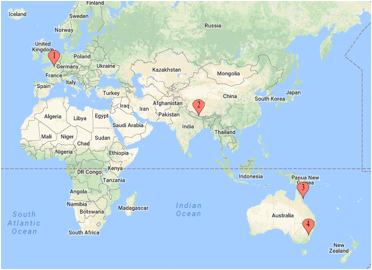
Abstract
Core Objective of Project Nepal: Tackling the real root of the issue of human trafficking by providing access to information and education through a 21st century library.
This report has been created during the internship with Libraries Without Borders (LWB) to provide a better understanding of ‘Project Nepal’. To answer the questions of WHERE, WHO, WHY, WHAT and HOW.
Project Nepal aims to build the first library in the Batase Village, Nepal, with the collaboration of Libraries Without Borders (Paris, France), Friends of Himalayan Children (Cairns, Australia) and the Australian National University (Canberra, Australia). This is an international project with three countries involved in the design, fundraising and the construction of the library.
The information has been collated from LWB documents, previous FHC reports, a self-written International Baccalaureate Extended Essay, a visit to Batase in 2016 and interviews with the village high school teacher and the members of the FHC. This is a community driven project and without the support of everyone involved, it would be an impossible task to achieve.
The teachers and students of Batase have repeatedly exclaimed that ‘to have a library will be a dream come true’. Now it is up to us.
MY STORY
I saw their boundless potential, I witnessed the hope they hold onto,
but I also saw their lack of resources. And a library will change everything.
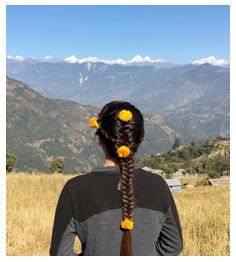 My name is Christina Lee and I was born in South
Korea. My family moved to Cairns when I was 12 years old. I completed my
International Baccalaureate Diploma at Cairns State High school. Now I am
studying Law and Arts (Human Rights) at the Australian National University in
Canberra. And my dream is to become an international human rights lawyer. In
November 2016, I went on a life-changing trip to Nepal because of my passion in
human rights. I volunteered in Batase, across from the Himalayas. Since 2012, I
have been fundraising and volunteering for the charity (Friends of Himalayan
Children) that supports the village from Cairns.
My name is Christina Lee and I was born in South
Korea. My family moved to Cairns when I was 12 years old. I completed my
International Baccalaureate Diploma at Cairns State High school. Now I am
studying Law and Arts (Human Rights) at the Australian National University in
Canberra. And my dream is to become an international human rights lawyer. In
November 2016, I went on a life-changing trip to Nepal because of my passion in
human rights. I volunteered in Batase, across from the Himalayas. Since 2012, I
have been fundraising and volunteering for the charity (Friends of Himalayan
Children) that supports the village from Cairns.
It was an absolutely phenomenal experience to finally see the village and the people I met there were the most beautiful human beings. But behind their smiles, they had traumatic scars. The girls, their sisters and mothers are constantly human trafficked to India with the false promise of hope. From that moment on, I decided that I will give everything I have into anything I can to eliminate injustice, such as modern slavery, in our international communities through education. After I returned from Nepal, I contacted Libraries Without Borders (LWB). As I witnessed that Batase especially lacks access to information, which is a fundamental human right. Now I know that increased access to information and resources means more opportunities, and increased chances of dreams becoming a reality. And I want to make that happen. Before I went to Nepal, if someone asked me why is your passion human rights? I used to say that somewhere in the world, there is some boy or girl, and that some boy or girl has a dream. That some dream can only come true if some day somebody decides to stand up and speak up and do something. Now it is no longer just some boy or girl somewhere in the world. I know these people now. I know their names, their faces, their pain, their stories and their dreams. From getting to know them, holding them tightly in my arms, looking into their beautiful eyes has reaffirmed to me that we have the power, we have the potential to make their dreams come true. And that is why I decided to go to Paris and intern with LWB to build the first library in Batase.
Libraries Without Borders

After I returned from my trip to Nepal, I sent an email to Libraries Without Borders (LWB), based in Paris, France, with the hope that they will assist me in building the first library in Batase Village. LWB responded to my email, accepted me into their team, and wholeheartedly trusted me to create their first project in Nepal. They are not only building libraries beyond borders, but have supported me beyond language barriers and broke down any boundaries to make this project come to life. It is an honour to work with an amazing team of people and be able to utilise their incredible innovations and resources.
LWB
strives to invent the 21st century library. More than just a collection of
books, libraries now have a cross-cutting impact on society, from fighting
poverty and social inequalities to capacity building, to stimulating creative
energies and entrepreneurship. Under the leadership of historian Patrick Weil,
LWB was established in January 2007.
LWB emerged from a sense of urgency to give each person around the world —
especially the poorest — the tools to access information and education, and
fulfill their maximum potential. Since its founding, LWB has advocated for a
modern approach to cultural cooperation with countries in need, especially when
it comes to rethinking book donations and building sustainable economical
models for public and community libraries.
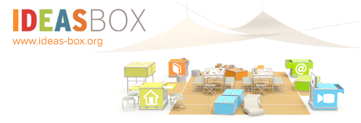
After the 2010 earthquake in Haiti, LWB broadened its activities. It developed a strong expertise in humanitarian emergency programs. In partnership with designer Philippe Starck, LWB launched the Ideas Box, a mobile “pop up” multimedia center that can be unpacked in twenty minutes, and is fully autonomous, portable, and durable. During that same period, LWB began to shift its efforts towards the digital, working extensively on innovative pedagogies and technologies to reach remote and underserved populations, such as Khan Academy, Code Travelers and LWB’s KoomBook.
LWB
is now active in 25 countries throughout the world, and has branches in the US
and in Europe (including Belgium, Switzerland and the UK).
Since 2007, over 2 million people have benefited from LWB’s programs.
Libraries are places where the poorest and most underserved people can broaden their horizons, transform their lives and build social capital. They are places of creativity and living laboratories of democracy that offer incomparable access to information, education and culture. In that sense, they are key spaces for the future, and the development of the human race and of our societies.
Through its action for libraries, LWB advocates that:
Free access to information is a fundamental right
LWB envisions this right as the freedom and ability for everyone to access open and quality information as well as the ability to contribute to the creation of information.
Education is a key tool for emancipation and development
Education should lift people, foster critical thinking, creativity and the capacity to undertake action, cultivate justice and help build free and democratic societies.
Partnership and co-building projects with local actors
LWB believes that a respectful mindset towards local cultures, practices and beliefs is a prerequisite to establishing sustainable and locally anchored actions.
Cultural diversity is a wealth that needs to be protected
LWB respects and promotes linguistic diversity, local publishing
and creative industries in countries where the organisation works. LWB never
forces contents (may they be books or digital contents) on a partner.
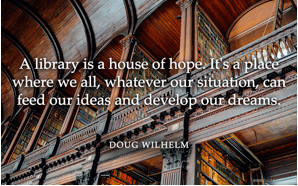
__________________________________________________________________
WHERE: BATASE VILLAGE, NEPAL
40% of adults in Nepal are illiterate. 57% live on less than $2 per day, and more than half live without electricity. Batase village is in the Sindhupalchok District in the Bagmati Zone of central Nepal, north of Kathmandu. The houses are spread across the landscape surrounding the village, and are encompassed of mud walled abodes, usually spread over two floors. The family sleeps in the upper level of the house, while their animals are downstairs for the night to keep them safe from Bengal tigers. The houses have no chimneys and there is usually a fire burning in the centre of the room, which is a huge cause of health issues amongst the villagers.
The students were forced to walk over 6 hours to attend school and receive education each day. Many also quit attending school as they were often too exhausted to complete both homework and housework and therefore fell behind with their studies. Some students decided to live with the local farmers and to receive accommodation, they were forced to work for many hours.
Furthermore, the 2015 April earthquake has caused detrimental effects within Nepal, including Batase village where the 17-bedroom hostel, many students resided in to attend the school built by the Cairns charity, Friends of Himalayan Children, have also been destroyed. The earthquake destroyed at least 95% of the villages in the Batase district. Due to the earthquake, the original school and hostel for orphaned children was demolished into a pile of rubble (as seen below). Fortunately, the new hostel building has been rebuilt and the children have moved into their new home in August 2017.
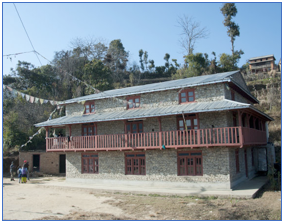
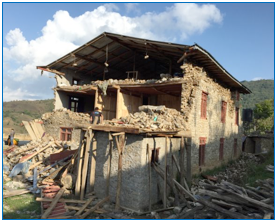
BATASE AT A GLANCE
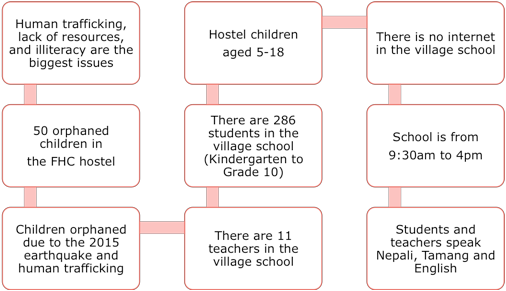
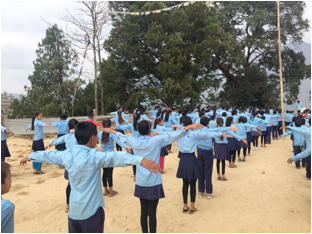
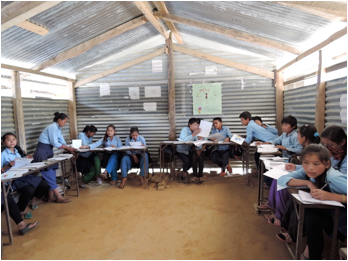
____________________________________________________________
WHO: FHC
(Friends of Himalayan Children)
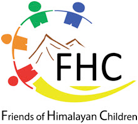
Friends of Himalayan Children is an Australian humanitarian organisation working to stop child labour and child slavery through providing access to education, a safe home for disadvantaged children and community development projects in rural Nepal.
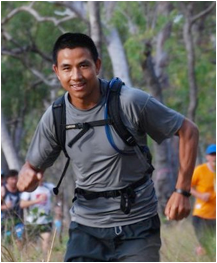
Som Tamang is from a remote village in Nepal called Batase. As a child working and living in Kathmandu, Som supported his family back in his home. He wanted his siblings to receive the education that he was denied. After coming to Cairns, Australia in 2003, Som continued to support his family and after returning to Nepal for a visit he realised that so many village children with potential were leaving Batase to work on the streets of Kathmandu. Often being abused and trafficked to India.
In 2008, he founded Friends of Himalayan Children. Now it is not only Som’s brothers and sisters that receive education, there are 286 students attending school every day.
Before the implementation of FHC, it was clear that lack of education existed in the Batase village with an unaccredited school curriculum and unwelcoming learning environment for students. The security of the children was also concerning as village girls often were trafficked for slavery in India.
After the works of FHC, the results made in the Batase village are significantly evident as child slavery rates have decreased within the village, attendance rates have increased to 100% and an enhanced education system has been implemented successfully. Nevertheless, the village is still impacted by significant lack of educational resources and its remoteness.
FHC is fully committed to ensuring that all girls have access to a good education, no matter what their personal situation is. They are working towards overcoming many barriers that often stop girls from attending school. FHC works from a community-based perspective and continuously receives feedback from the students and villagers about what support is needed in the village.
FHC has a large membership base which is growing very quickly both in Cairns and Australia. Through FHC, the children are living in a more safe and caring environment where they are being educated and given choices about their future. The FHC committee holds monthly meetings and is dedicated to ensuring that FHC is a professional and accountable organisation that adheres to their mission statement and works in an inclusive manner to create a difference in Batase village.
They continuously focus on successfully raising awareness of the social issue of human trafficking and the lack of education both in Nepal and Australia.
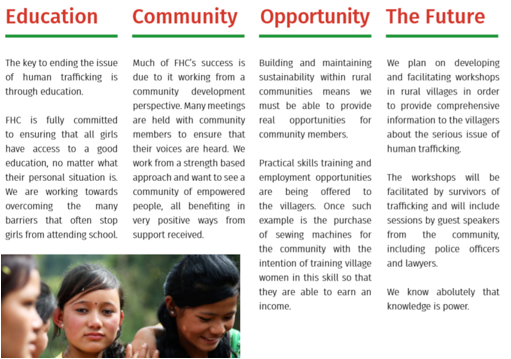
Results Made due to FHC with the assistance of the Cairns Community
Condition of School
· The condition of school improved (such as the usage of whiteboards).
· Increase in number of teachers, total of 11 teachers.
Attendance rates
· Increased to a total of 286 students attending school.
Literacy Levels
· Students have a better grasp of English due to international volunteers.
Ratio of boys and girls
· 60% of the students are now girls (a significant change).
Classroom content
· A curriculum has been implemented.
· Classroom rules have been created.
· Music classes with instruments from Cairns have been set.
· Education resources are sent from Cairns and Australia including stationery and school backpacks.
Drop-out rates
· In 2010, approximately 50% of the students dropped out after secondary school. By 2015, 20% dropped out. Since 2017, nearly 95% are still attending Grade 10.
· There is no college (after secondary school which ends at Grade 10) in the village, so students need to go to Kathmandu for Grade 11 and 12, hence why many choose not to continue schooling.
· Therefore, FHC aims to have Grade 11 and 12 in Batase by 2020.
Human trafficking in Village
· Through the implementation of FHC, the trafficking rates have decreased.
· Nevertheless, the issue of recruitment through manipulation and misinformation is still significant due to the proximity to Kathmandu and traffickers often choose this village as a target.
Social Issue
· The generational cycle of not knowing how to read and write has been broken.
· More international volunteers are coming to the village.
· Children now understand the importance of learning English in order to be employed.
· Batase village as a community is now more aware of the importance and need of education.
Employment
· FHC is currently employing a total of 18 teachers who work in six schools across the two regional districts.
___________________________________________________________________________
WHY: BATASE?
Human trafficking is heavily present in Nepal due to the lack of awareness and access to information.
Batase is a high-risk traffic zone due to its proximity to Kathmandu.
o There are an estimated 27 million adults and 13 million children around the world who are victims of human trafficking.
o Every day more than 54 young girls and women are trafficked out of Nepal and into India to enter a life of slavery.
o Many of the women and children are from poor, remote areas of Nepal who are struggling to look after their families.
o Lack of education, illiteracy and poverty are the biggest causes of human trafficking as these people are most vulnerable to misinformation and manipulation.
United Nations Office on Drugs and Crime:
Human Trafficking is defined in the Trafficking Protocol as, "the recruitment, transport, transfer, harbouring or receipt of a person by such means as threat or use of force or other forms of coercion, abduction, fraud or deception for the purpose of exploitation."
The definition of trafficking consists of three core elements:
1) The action of trafficking which means the recruitment, transportation, transfer, harbouring or receipt of persons.
2) The means of trafficking which includes threat of or use of force, deception, coercion, abuse of power or position of vulnerability.
3) The purpose of trafficking which is always exploitation. In the words of the Trafficking Protocol, article 3 "exploitation shall include, at a minimum, the exploitation of the prostitution of others or other forms of sexual exploitation, forced labour or services, slavery or practices similar to slavery, servitude or the removal of organs.
THE CYCLE OF HUMAN TRAFFICKING IN BATASE
1. Vulnerable, uneducated girls are targeted
Usually girls who have dropped out of school (both due to financial and academic difficulties) are more vulnerable to the traffickers.
- They are more unaware of the issue of human trafficking
- They do not see education as a reasonable option to better their circumstances
- They are more likely to accept the opportunities offered by the traffickers
2. Recruitment
Manipulation, misinformation and deception are often the tactics of a trafficker (often disguised as a distant family member or a boyfriend and is not from Batase).
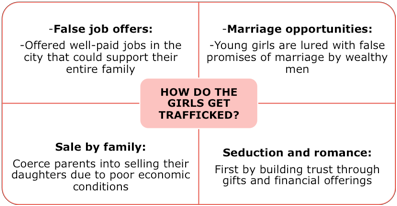
3. Transportation
Once the girls are convinced that leaving education and Batase is a better option, they will follow the trafficker. As these girls are often not aware what life outside of Batase looks like, they do not know where they are heading.
4. Exploitation
The trafficked girls are usually sold for prostitution and forced labour in India, and some also have their organs removed. Rarely they escape and find their way back home.
More Reasons Why Batase Needs a Library
· Illiteracy is a huge problem and why students drop out of school
· There is no library in Batase and the closest library is in Kathmandu (which takes a two-day hike, or a 3-5 hour 4WD drive)
· There is no newspaper access in the village
· There is no internet access in the village school at the moment
· There is no sufficient study space in the village
o Children study on grass, at the cow shed or on the floor
Free access to information is a fundamental right
- Batase is a very remote community. It takes two days to trek to Kathmandu from the village. The residents grow in an isolated society and have limited knowledge of the outside world.
- Students in Batase have limited resources. In class, they are obliged to follow the Nepalese Government Curriculum. One of the subjects requires students to learn about computers without any access to such technology.
- Science classes for higher grade students are also a challenge. Students are asked to understand concepts of Biology through colourless, limited supply of textbooks. With the assistance of videos and online lessons, their understanding of these concepts will certainly improve.
Education is a key tool for emancipation and development
- The children of Batase village are eager to learn. They all come to classrooms passionately (no matter how long it takes to get to the school) and are ready to learn. With the educational resources provided, these amazing students will be able to reach beyond their potential.
- The children need to read fiction and story books as it has been found that by identifying with role models and superheroes, children can begin to feel like they are aligning with what is good and can develop their own agency, power, and value in the world.
Partnership and co-building projects with local actors
- This project will show that international collaboration with local charities, universities and schools can work effectively and efficiently.
The People
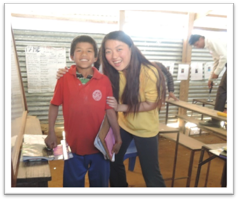
These three people show why Batase needs a library.
Firstly, Ashaman is a Year 7 student of the village high school. Whenever he saw me at school, he would run up to me with a pencil in his hand and say, ‘teacher, teacher, give me seven more maths questions’. His dream is to become a maths teacher. He was so eager to learn. Despite the dirt on the class floor. Despite the lack of teachers and textbooks, he showed me the potential of these students and why they deserve more.

Secondly, this is Rita. Rita’s father is in jail right now for trafficking many women as sex slaves to India. When Rita told me her story, she held my hand and cried and cried.
I always saw these stories on the news, but I never knew I would be holding reality in my arms.
Rita, despite the horrific life she had to go through, is the happiest girl ever. She goes to high school in Kathmandu and her favourite subjects are Science and Maths. She is sponsored by Friends of Himalayan Children and now she lives in safety and hope that life will and is getting better.
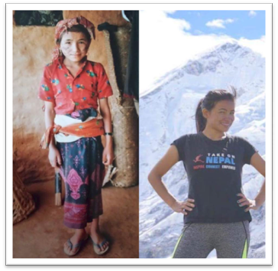
Finally, this is Phulmaya. On the left, it is Phulmaya when she was in primary school, on the right, is her today. Phulmaya is a true testament to the power of education. Nepal has one of the highest rates of child marriage in the world and as a young girl growing up in Batase, this could have been Phulmaya's fate.
Phulmaya recently completed a Diploma of Pharmacy and is about to
undertake a Bachelor Degree, first girl from the village to reach tertiary
education. Phulmaya speaks almost perfect English, and she is now the leading
trekking guide of Batase, showing the girls of Nepal that anything is possible.
Her dream now is to summit Everest.
________________________________________________________________________________
WHAT: LIBRARY FOR BATASE
The Building
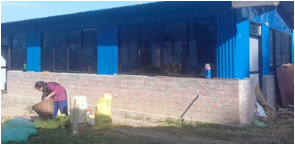
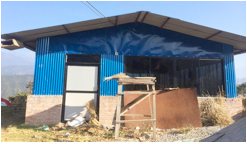
Potential Users
· Currently 50 students in the orphanage (aged 5-18).
· 11 teachers and 286 students in the village school (kindergarten – Grade 10).
· Villages near Batase can also have access to the library.
Inside the Library
1. E-Library: KoomBook (created by LWB)
This is the main tool to combat human trafficking in the village by giving access to real information. The KoomBook will also be essential in providing educational resources.
2. Physical Books (Both fiction and non-fiction / Nepali and English)
To provide access to the world beyond textbooks and classroom contents.
3. Entertainment Area
There will also be movie screenings, story writings, film shootings (with tablets), games to encourage group activities and attendance of younger children and illiterate residents.
4. Local Librarian
The librarian will ensure that the resources are looked after, facilitate activities and guide the users so they know what types of information are available and how they can access them. By sponsoring a local librarian, we will be supporting the local industry. We will also provide on-going training to the librarian, who will also collate both qualitative and quantitative data to evaluate the impact of the library, in order to make improvements.
KOOMBOOK

THE ULTRA-LIGHT AND AUTONOMOUS DIGITAL LIBRARY
Libraries Without Borders (LWB) has created a new innovative tool - KoomBook: the digital library of the future. Both autonomous and ultra-portable, the KoomBook works without an internet connection to provide access to information and learning even in the most remote locations.
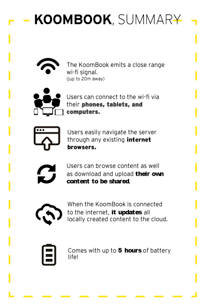
Roughly the size of a book, the KoomBook creates a wi-fi hotspot which the users can connect with their smartphones, tablets, or computers to access the thousands of educational and social resources for their training. The KoomBook can also be connected to a television or video projector for group activities.
Placed in a library, a school, a rural medical facility, or even at home, the KoomBook can allow up to 20 simultaneous users to connect and share information at the same time in a variety of formats such as text, audio, and video as well as through online classes. Once connected to the internet, the KoomBook automatically uploads all of the contents that were created while offline to the Ideas Cube.
The compact and lightweight KoomBook provides wireless access to thousands of educational and cultural resources such as Wikipedia, Khan Academy, TEDtalks, a curated selection from the Gutenberg Library, and thousands of other documents and videos. It also has a media center which allows users to locally upload documents and videos, allowing the community can continuously and permanently improve the core content.
Main Objectives of the KoomBook in Batase Library
- To provide access to information regarding human trafficking, through videos and multimedia – raise awareness of the issue and give relevant and essential material
- To provide access to educational and cultural resources without internet connection
___________________________________________________________________________________
HOW: TO FIGHT HUMAN TRAFFICKING?
Objective: To decrease vulnerability by providing access to information and education

Figure 1: Current Human Trafficking Process in Batase (see page 12 for further detail)
![]()

Figure 2: End of Human Trafficking Process in Batase through Project Nepal
1. Issue: The girls believe what the traffickers tell them to be the truth.
As the potential targets have no prior knowledge or access to other sources of information, they are easily convinced that what they offer is a reasonable option and the only pathway to a better future.
Solution: To break the cycle of human trafficking, we must show that the only idea that the vulnerable know of which they perceive as reality is NOT THE TRUTH.
Method: Customisation of the KoomBook to easily and effectively provide essential information to potential targets. Immediate access to awareness videos will be made possible through the presentation of similar types of questions (which are the links to the awareness raising videos) that are often asked by the traffickers to convince the girls.
E.g. ‘Do you want a job in Kathmandu and support your family?’ These questions will be posed to attract attention of the vulnerable to show them what it actually means to be ‘working in a big city’ and provide them with opportunities to make an informed decision.
+ Positive empowerment videos such as testimonies on why some girls chose to stay will also be inserted – as they can become role models, which is critical for development of young people.
2. Issue: The most vulnerable are those who have dropped out of school often because they found the class contents to be difficult and not interesting
Solution: Encourage and provide additional support to those who are struggling in school to enjoy learning and not consider leaving education as a reasonable option.
Method: Provide resources such as Khan Academy, Gutenberg, Wikipedia plus e-books.
3. Issue: Even if the girls do not want to go, their families will force them. They have no other means of support and do not know their rights
Solution: There needs to be an access to means of legal support in a safe environment.
Method: Provide hotlines or ways to gain help if they feel as though they are in danger.
4. Issue: Awareness workshops are the only way this information is spread
As human trafficking is a huge issue in Batase, every year, FHC conducts workshops with the local policemen to raise awareness.
Solution: Hold workshops more frequently with visual aids and invite neighbouring villages. Provide FAQs and facts on the KoomBook for further information.
Method: Workshops held with visual aids such as a projector will create a greater impact in sharing the idea. Moreover, the facilitator must be trained to assist users on how to access relevant information and provide guidance on what information is available. ![]()


Further
Objectives of the Library
Even if the main objective of the library is to stop human trafficking, the library will be designed to suit the needs of a wide audience of all ages and education levels. We are open to suggestions in regard to additional educational resources and ideas.
Education
- To provide a clean and safe place for students to learn, as currently they have nowhere to study after school hours.
- To provide a hub for creativity and imagination, a world outside of Batase and Nepal.
- To provide access to a wide range of contents – digital and paper.
- To use library as a preparation tool and research for teachers, and as a result, higher quality lessons will be delivered.
Child protection
- Students who do not excel at school can receive outside hours support and help them to stay in education and not leave the village to find work at a young age.
- The library will be a safe place as many children have no place to go after school and are often out in the streets. This implementation will not only protect them physically but also given them the opportunity to pursue their endeavors, protect their dreams and see a better future.
Community cohesion
- The library can also be used for workshops (both space and resources are essential).
- The international volunteers who come to the village often conduct workshops, such as hygiene and self-defense classes, however, there has never been a sufficient space to carry out such activities.
- Other villages around Batase can also have access to information and opportunity.
__________________________________________________________________________________
WHO: ELSE IS INVOLVED?

1. ANU Take on Nepal Volunteer Team
Sixteen Australian National University (ANU) students (including myself) will travel to Nepal in December 2018 to build the library, assist the users with the new resources and hold human trafficking awareness workshops.
There are international volunteers (mostly university students) in the village consistently, and the major trips are in July and November. These students can maintain and look after the library as a part of their volunteer work, and also facilitate workshops.
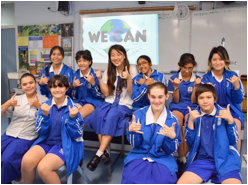
2. Cairns State High School WE CAN Human Rights Team
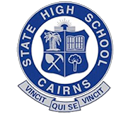
The WE CAN Human Rights Awareness Campaign was launched in 2015.
The team meets every week to organise activities, plan projects for fundraising opportunities and raise awareness for global human rights issues. The campaign was set with the mindset of ‘think globally, act locally’.
Hence, this team will raise donations to build the library in Batase in their high school and the Cairns community. The team will play a huge role in raising the funds in Cairns.
 3. Cairns Women Everest Base Camp Team
3. Cairns Women Everest Base Camp Team
This team is a women-only (other than leading guides) Everest Base Camp trek for September 2018. The idea behind it is to bring women together to have an experience of a lifetime whilst also using the opportunity to raise funds for Friends of Himalayan Children, the money raised will be directed towards the library project in the village.
The 15 women from the Cairns community will support with fundraising activities as well.
___________________________________________________________________________________
What: ARE THE FUNDS FOR?
Total estimated cost of project: $10000 / Deadline of fundraising: July 2018 (may change)
· Remodeling of the current shed
· Furniture in the library – desks, chairs, carpet, etc.
· E-library: customisation and creation of the KoomBook
· Creation of human trafficking awareness videos
· Contents of the library – tablets, books, board games
· Shipping of KoomBook to Australia from France
· Transportation of KoomBook and materials from Australia to Batase, Nepal
· Sponsoring the librarian
· Training the librarian
· Providing electricity in the library
_______________________________________________________________________________________
HOW: WILL WE RAISE THE FUNDS?
Majority of the funding streams have been identified to be in Australia (local actors).
1. Australian National University students
- Crowdfunding
- Fundraiser dinners
- Seeking donations in Canberra
2. Cairns State High School students
- Donation tins in the community
- Sausage sizzles
- Contacting the Cairns local council, journalists, libraries, galleries for donations
3. Cairns Women Everest Base Camp Team
Furthermore, potential donors will be contacted.
But YOUR support is essential.
This is a community driven project and without the support of everyone involved, it would be an impossible task to achieve. If you are interested in supporting us, please contact Christina Lee or use the donation link (see page 23 for contact details).
___________________________________________________________________________________________________
WHEN: TIMELINE OF THE PROJECT
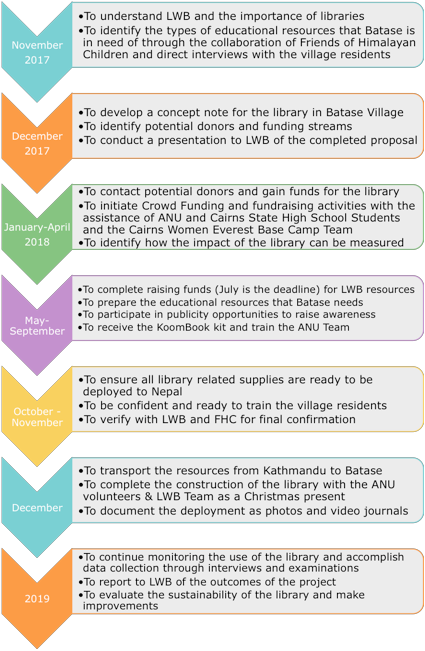
WANT TO KNOW MORE?
Donation Link
https://www.gofundme.com/21stcenturylibraryforbatase
Christina Lee Contact Details
Email:
christinajuyeonlee@hotmail.com
Australian Phone Number: + 61 413 473 687
Address:
Burgmann College
52 Daley Road
Acton, Australia 2601
Libraries Without Borders Website
https://www.librarieswithoutborders.org/
Friends of Himalayan Children Website
Friends of Himalayan Children Facebook
https://www.facebook.com/f.hc.marketing/
Christina Lee’s Experience in Nepal in 21 minutes
https://www.youtube.com/watch?v=5UTHHv5xwK4
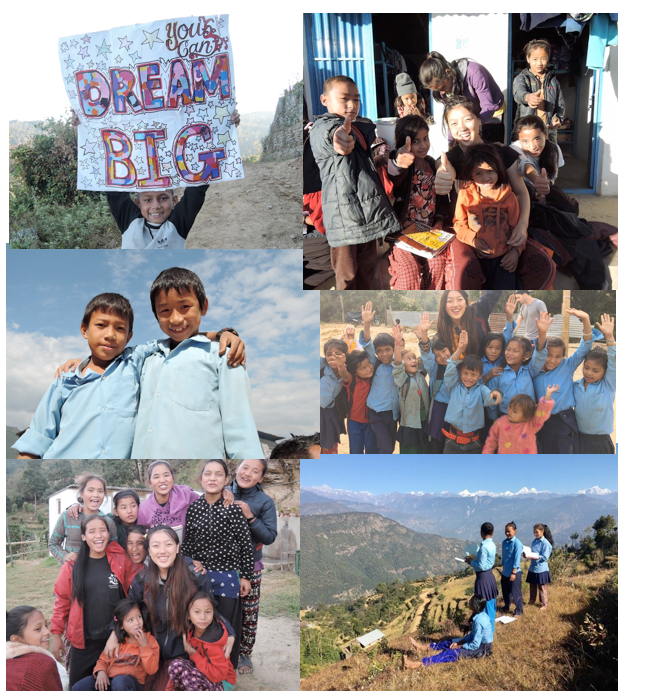
Library for Batase
Project Nepal materials created solely by Christina Lee
This page formatted for Travelin-Tortuga and fully endorsed by Rick Howe